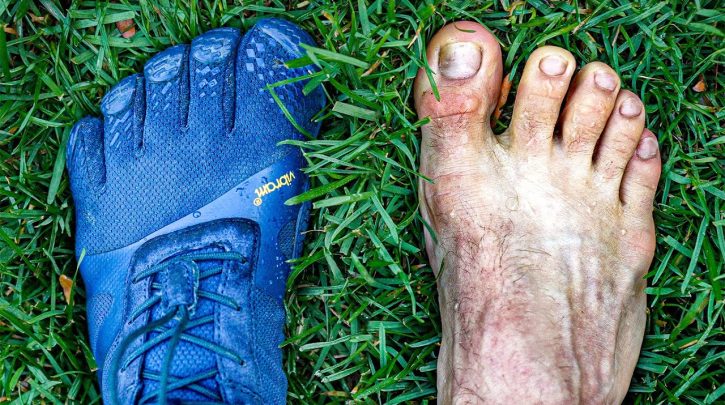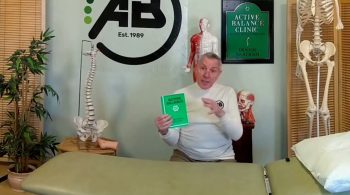“Discovering the Benefits of Barefoot Shoes: How Going Back to Our Ancestral Roots Can Improve Foot Health”
As people pursue a healthy lifestyle, they resort to various ways to improve their overall well-being. One alternative that has gained attention in recent years is the use of barefoot shoes. Essentially, these shoes mimic the feeling of walking barefoot, with minimal cushioning and support.
Proponents argue that it provides a host of benefits, including improved proprioception, better balance, and stronger foot muscles. At its core, this concept is based on the premise that humans evolved to walk without shoes, and our feet are naturally designed to adapt to various surfaces. By using barefoot shoes, we can return to our ancestral roots and reap the benefits of a healthier foot structure.
Studies have shown that wearing shoes for extended periods can alter the foot’s biomechanics, leading to issues such as plantar fasciitis, flat feet, and other foot-related problems. Furthermore, barefoot shoes promote better posture, stability, and endurance, as the entire foot is engaged in the walking process. As with any lifestyle
The Evolution of Shoes: From Sharp Rocks to Cushioned Soles
The history of shoes is a fascinating tale of human innovation and ingenuity. The earliest evidence of footwear dates back over 40,000 years ago when our ancestors fashioned crude sandals from animal hides and plant fibers to protect their feet from rough terrain.
Over time, these simple sandals evolved into more sophisticated footwear as people discovered better materials, such as leather and woven fabrics, and developed new techniques for crafting them. In ancient Egypt, for example, footwear became a symbol of social status, with the wealthy wearing ornately decorated sandals and boots made from fine leather or even gold.
Meanwhile, in ancient Greece and Rome, shoes were designed for both form and function, with the advent of specialized footwear for sports, military, and everyday use. The Middle Ages marked a turning point in shoe design, with the introduction of the first recognizable high heels for women, as well as sturdy boots for knights and soldiers. It wasn’t until the Industrial Revolution that mass-produced shoes became widely available, leading to the modern-day
The Emergence of Minimalist Shoes and their Benefits for Foot Health
In recent years, minimalist shoes have gained significant popularity among people who are conscious of their foot health. These shoes are designed to imitate the feeling of barefoot walking by providing a minimum amount of cushioning and support. Unlike traditional shoes, minimalist shoes allow your feet to move more freely, helping to strengthen the muscles in your feet and lower legs.
With more and more people suffering from foot problems, such as plantar fasciitis, neuromas, and tendonitis, the emergence of minimalist shoes has been a lifeline for many. These shoes can help alleviate many of the problems that traditional shoes can cause, such as overpronation, supination, and instability.
They allow your feet to move more naturally, reducing the stress on your joints and ligaments. Minimalist shoes can also help improve your balance and posture, promoting a healthier spine and reducing the risk of developing back pain. Another significant benefit of minimalist shoes is that they are incredibly lightweight, providing a more natural feel and
Benefits and Drawbacks of Barefoot Shoes: A Review of Toe-Spreading Footwear
Barefoot shoes, also known as toe-spreading footwear, have become increasingly popular in recent years due to their supposed health benefits. These shoes are designed to mimic the feeling of walking barefoot, enabling the foot to move and function more naturally.
One of the primary benefits of barefoot shoes is that they help to strengthen the foot muscles and improve overall foot health. By allowing the toes to splay out naturally, barefoot shoes can help to correct imbalances and reduce the risk of injury. In addition, many barefoot shoe advocates claim that these shoes can improve balance, and posture, and even reduce pain in the knees and lower back.
However, there are also some potential drawbacks to wearing barefoot shoes. One of the most common issues is that it can take some time to adjust to the unique sensation of wearing toe-spreading footwear. This can lead to discomfort, blisters, and even injuries in some cases. Additionally, barefoot shoes provide little protection against sharp objects or uneven
Barefoot Shoes: The Benefits and Challenges of Wearing Them
Barefoot shoes have become increasingly popular in recent years due to their numerous health benefits. These shoes are specifically designed to mimic the feeling of walking barefoot while still providing some protection to the feet.
The main benefit of wearing these shoes is that they encourage a natural gait, which can improve balance, strength, and overall foot health. Barefoot shoes also help to strengthen the muscles in the feet and legs, which can lead to a reduction in injuries and an increase in overall athleticism. However, there are also some challenges to wearing barefoot shoes.
One of the main challenges is that they can take some time to get used to, particularly for people who are used to wearing traditional shoes. Additionally, barefoot shoes may not be appropriate for everyone, particularly those with certain foot conditions or injuries. Despite these challenges, the benefits of wearing barefoot shoes make them a worthwhile investment for those looking to improve their overall foot health and athletic performance.
Tips for a smooth transition to barefoot shoes
When transitioning to barefoot shoes, it is important to proceed with caution and patience to ensure a smooth and comfortable experience. First, start by gradually introducing your feet to the shoes. Begin by wearing them for short periods of time and gradually increasing the duration as your feet adapt. It is also recommended to start with a minimalist style shoe and gradually transition to more minimalist or barefoot shoes as your feet become stronger.
When wearing barefoot shoes, it is important to pay attention to your posture and body mechanics. You should focus on landing on the mid-foot or forefoot and allowing your feet to naturally absorb shock. Finally, it is important to take care of your feet by stretching and strengthening them regularly. This can be achieved through exercises such as toe curls, calf raises, and foot massages. By following these tips, you can ensure a smooth and successful transition to barefoot shoes and enjoy the benefits of improved balance, strength, and foot health.
“Expert Tips for Transitioning to Barefoot Shoes and Alleviating Foot Pain”
If you are considering transitioning to barefoot shoes, it is important to do so gradually to avoid foot pain and injury. Start by wearing the shoes for short periods of time, and gradually increase the duration as your feet and body adapt. When you begin wearing barefoot shoes, you may experience soreness or pain in your feet, ankles, or calves. This is often the result of muscles that have not been used to their full potential being activated.
To alleviate this discomfort, stretch your feet, calves, and ankles regularly. Additionally, focus on walking with a heel-to-toe stride, and avoid over-striding or landing on the ball of your foot. When wearing barefoot shoes, it is also important to take note of the terrain you will be walking on. Avoid sharp rocks or uneven surfaces that could cause injury. Lastly, invest in a high-quality barefoot shoe that provides good support and protection for your feet. With patience and consistency, transitioning to barefoot shoes can help alleviate foot
“Minimalist Footwear: The Benefits of Taking Smaller Steps and Strengthening Your Calves”
Minimalist footwear, also known as barefoot shoes, is a type of footwear that allows you to feel more connected to the ground and experience a more natural gait. These shoes are designed to have minimal padding, no heel lift, and a flexible sole. By wearing minimalist shoes, you can take smaller steps and strengthen your calves, which can lead to a range of benefits.
First, taking smaller steps allows you to land more softly, reducing the impact on your joints and decreasing the risk of injury. Additionally, strengthening your calves can improve your overall gait and posture, leading to better balance and stability. Minimalist footwear can also help to improve proprioception, which is your body’s sense of its position in space. By allowing your feet to feel the ground more directly, you can improve your body awareness and enhance your athletic performance. Finally, minimalist footwear is often more breathable and lightweight than traditional shoes, making them a great choice for warm weather and outdoor activities. Overall, the benefits of
Read More: Is Breakfast the Most Important Meal for Weight Loss?







